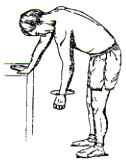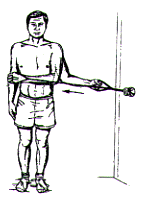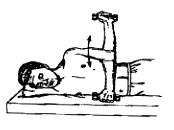Dr. MJ Bazos MD, Patient
Handout
Shoulder
Pain
What causes pain in my shoulder?
A common cause of shoulder pain is soreness of
the tendon (a cord that attaches a muscle) of the rotator cuff (the part of the
shoulder that helps circular motion). Another common cause is soreness of the
subacromial bursa (a sac of fluid under the highest part of the shoulder). You
might have soreness after activities that require you to lift your arms, like
painting, lifting or playing a sport. Or you may not remember any specific
injury.
The main joint in the shoulder is formed by the
arm bone and the shoulder blade. The joint socket is very shallow to allow a
wide range of motion in the arm. The rotator cuff is made up of 4 muscles that
surround the arm bone. This cuff keeps the shoulder steady as the arm moves.
How does the rotator cuff get hurt?
One of the muscles (the supraspinatus muscle)
rests on top of the shoulder. Its tendon travels under the bone on the outside
of the shoulder (the acromion). This tendon is the one most often injured
because of its position between the bones. As the tendon becomes inflamed (sore
and swollen), it can become pinched between the 2 bones. The sac of fluid that
cushions the tendon can also be damaged.
How do I know the rotator cuff is
hurt?
If the rotator cuff is involved, the pain is
usually in the front or outside of the shoulder. This pain is usually worse when
you raise your arm or lift something above your head. The pain can be bad enough
to keep you from doing even the simplest tasks. Pain at night is common, and it
may be bad enough to wake you up.
What can I do to help the pain?
Treatment should help your pain and help you get
back normal function in your shoulder. Pain relief strategies include active
rest (keep moving your shoulder), physical treatments such as ultrasound and
application of ice, nonsteroidal anti-inflammatory medicine such as ibuprofen
(some brands: Advil, Motrin, Nuprin) or naproxen (brand name: Aleve) and,
occasionally, an injection of anti-inflammatory steroids.
Normal function can be restored with special
exercises. The first step of rehabilitation therapy is simple range-of-motion
exercises. By bending over and moving (rotating) your shoulder in large circles,
you will help to avoid the serious complication of rotator cuff injury, called a
frozen shoulder. These range-of-motion exercises are followed by resistance
exercises using rubber tubing or light dumbbells. The final step is resistance
training with weight machines or free weights.
What exercises should I do?
The following exercises may help you (see
Pictures 1, 2 and 3). Check with your doctor to see if you should do other
exercises, too.
|
Picture 1. Range of motion. Stand up and
lean over so that you're facing the floor. Let your sore arm dangle straight
down. Draw circles in the air with your sore arm. Start with small circles and
then draw bigger ones. Repeat these exercises frequently (5 to 10 times) during
the day. If you have pain, stop. You can try again later.
|
|
|
Picture 1
|
|
Picture 2. Rotator cuff strengthening.
Use a piece of rubber tubing for these exercises. Stand next to a closed door
with a doorknob. Loop the tubing around the knob. With your hand that is closest
to the door, bend your arm at a 90° angle and grab the loop of the tubing.
Pull the band across your tummy. At first, do one set of 10 exercises. Try to
increase the sets as your shoulder pain lessens. These exercises should be done
every day.
|
|
|
Picture 2
|
|
Picture 3. Upper extremity strengthening.
As your pain goes away, try adding a general upper body weight-lifting program
using weight machines or free weights. Lie on your right side with your left arm
at your side. With a weight in your left hand and your forearm across your
tummy, raise your forearm. Keep your elbow near your side.
|
|
|
Picture 3
|
Are there other things I can do to
help this injury heal?
An aerobic exercise program will help improve
the blood flow to the tendon or bursa. This helps reduce soreness. Smokers
should quit smoking so that more oxygen reaches the injured tendon. This will
help the injury heal faster.
Will I need surgery?
Sometimes an injury that lasts a long time will
cause the tendon to tear. This type of injury may need surgery. A tear of the
rotator cuff is suspected when the pain goes on in spite of a good
rehabilitation program, or when there is weakness in certain motions of the arm.


